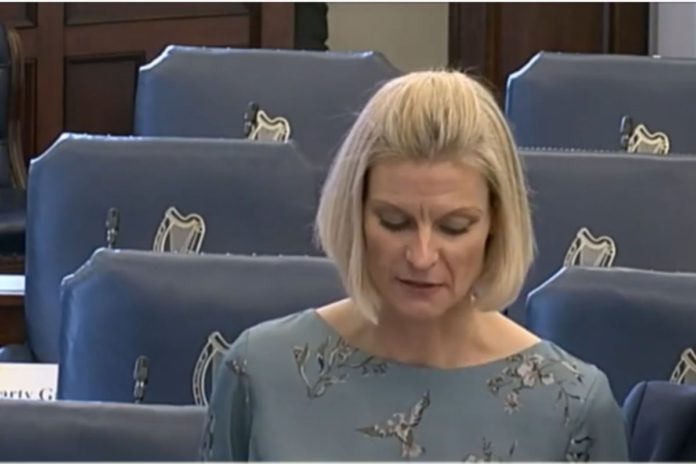Minister of State at the DAFM, Pippa Hackett, has urged farmers to consider multi-species swards to reduce input costs.
The senator made the remark during an address in the Seanad this week when discussing soaring fertiliser costs.
Fertiliser costs
Alexis Maxwell, an analyst at Green Markets, recently told Bloomberg: “As fertiliser prices continue to rise, farmers will either cut application rates, cut fertiliser entirely in hopes for lower future pricing, or cut other farm products to account for the bigger expected spend.”
Hackett told the Seanad that this week, Bloomberg claimed that “things were getting even worse and that Europe has a fertiliser crisis and prices are spiking”.
Continuing, Hackett said: “There are some tough times ahead for many of our farmers. Goods based on fossil fuels have shaped our society, and fertiliser is one of them.”
“In the same way, we cannot live without plastics; much of the grass farmers grow cannot live without chemical fertilisers. We are all hooked.”
“As the price of fossil fuels continues to rise, might this be time to ask: Does it have to be this way, and can we do things differently?”
This programme for government commits Ireland to deliver an ambitious reduction in the use of inorganic nitrogen fertiliser through to 2030.
“It does not say by how much. However, it does say we must do it without undermining family opportunity,” she added.
Last week, she visited a dairy farmer on the Cork-Waterford border and told his story to the house.
“This farmer is no green romantic and is not an organic producer. He is an intensive farmer who milks 200 cows on 265-acres, along with his father’s 60-acre farm to carry his replacement heifers and to grow some forage crops.”
“He is a tough businessman with an enterprise that needs to deliver for him and his young family, but he believes that in the long-term, his farm also needs to deliver for his soil.”
Saved €40,000
In 2018, recognising that his standard perennial ryegrass production system required a great amount of fertiliser and a stable climate, he decided to change tack.
He began introducing multi-species swards as part of his re-seeding programme, planting multiple varieties of grasses, clovers and herbs. He also started decreasing his use of chemical nitrogen.
“As he decreased his chemical use, he waited to see if the grass would stop growing. It did not.”
“He waited to see if milk yields would drop. They did not. This year, he applied no chemical nitrogen to the grazing ground at all. Yet, he continues to see yields maintained and improved profitability.”
“I know that one swallow does not make a summer and that this farmer’s results do not constitute a scientific study. But, this farm is producing approximately 8,000L of milk per cow per annum, which is well above the national average and has saved close on €40,000 this year alone on fertiliser and application costs.”
She said chemical fertilisers can do a “great job” of feeding a certain type of grass. However, she added, it is not necessary on multi-species swards, which draw on nature’s nutrients for growth.
“This is regenerative agriculture with healthy soil and healthy cattle thriving on a tasty and nutritious mixture of crops, however wild and uneven they might look to the casual observer.”
“What this farmer is doing may not work for every farmer. But, every farmer should at least think about what is happening on that farm.”
“I know what I saw, which was a strong family-run dairy business based on healthy soil and a farm bursting with biodiversity. I would like to believe too that I saw the future,” she concluded.





